The government has cooled in its support for open access operations, but the companies concerned remain optimistic that their ambitions for more services will reach fruition. Philip Haigh reports.
In this article:
The government has cooled in its support for open access operations, but the companies concerned remain optimistic that their ambitions for more services will reach fruition. Philip Haigh reports.
In this article:
- Open access services make up a small share of UK rail journeys but promote competition.
- They face criticism over infrastructure costs and capacity, despite their contribution to growth.
- Labour's stance on open access is evolving, as it balances private involvement with nationalised rail services.
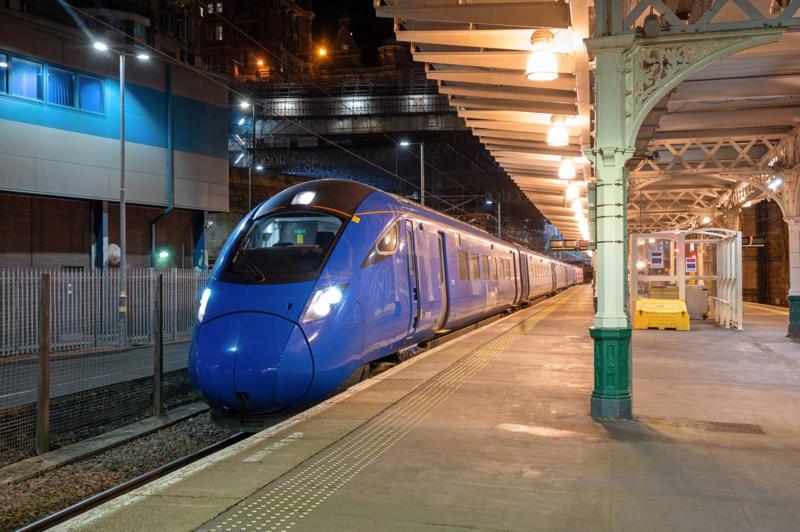
Truth be told, it’s decades since Britain had a privatised rail network.
Infrastructure owner Railtrack sat in shareholders’ hands for just six years between 1996 and 2002. Successor Network Rail has always been a government company, although in its early years it tried to disguise this.
And it’s 20 years since the Department for Transport took direct control of passenger franchising and began further tightening specifications, so that train operators became simply service providers.
The only exceptions in the passenger sphere are the open access operators - chiefly Grand Central, Hull Trains and Lumo, all of which operate on the East Coast Main Line from London King’s Cross. Heathrow Express is another, but DfT contractor Great Western Railway now runs its services.
Open access is niche, but commands attention beyond its presence.
Between them, the ECML open access trio’s passengers made 4.5 million journeys in the last financial year, according to figures from the Office of Rail and Road (ORR). That’s 0.28% of the UK railway’s total of 1.6 billion journeys in the same year. Even adding HEx’s 4.5 million journeys to the open access total only brings the sector’s proportion up to 0.56%.
In revenue terms, ORR figures show total passenger revenue in 2023-24 of £11.0 billion, of which £0.2bn came from open access (just 1.8%).
Labour came to power last summer broadly welcoming open access operators. It launched its transport manifesto in the offices of a private company, Trainline (a ticket seller rather than train operator), which suggested it was comfortable with private sector involvement in rail.
In Labour’s transport plan, Louise Haigh (as Shadow Transport Secretary) had said in the run-up to the election: “Open access operators can play an important role within a rail system. Open access has a proven track record in driving competition and better passenger outcomes in countries whose services are run predominantly by public operators. Such operators make the most of network capacity and can help lower emissions by contributing to mode shift.”
This support survived her transition into government. She told the Transport Select Committee on November 13 2024: “I am very happy for open access to play a full role in the future of the railways.”
She cited London-Edinburgh operator Lumo and said it had “done a really good job… in encouraging people onto the railways and off aeroplanes”, adding that its service was “very reasonable” and that it provided competition with LNER.
Less than a month later, open access received Prime Ministerial approval when Sir Keir Starmer visited Hitachi’s factory in Newton Aycliffe to trumpet an order for trains from Angel Trains on behalf of FirstGroup, for its forthcoming open access service between London Euston and Stirling.
FirstGroup Chief Executive Graham Sutherland said then: “Successful open access services can provide new connections, add capacity, support local businesses and suppliers, secure jobs, and help to drive social mobility and future economic growth.”
But by that time, Haigh wasn’t by Starmer’s side. She’d quit in a row over a mobile phone lost before she became an MP.
Starmer replaced her with Heidi Alexander, who was there in Newton Aycliffe to bask in the reflection of a private train operator ordering trains from a private manufacturer via a private leasing company using £500 million of private funding.
All this while she (and Haigh before her) was preparing to nationalise the DfT’s contract operators.
However, while ignoring this rank hypocrisy, it seemed that Labour was content for open access to play a role in what would be a nationalised network.
It hadn’t always been this way. In 2020, Labour published a plan for Britain’s railways that took a different view. It said: “Labour believes that the present open access passenger services should be run as part of the integrated railway rather than as discrete private enterprises with separate confusing ticketing and prices.”
Alexander looks more aligned with this view than with Haigh’s more liberal outlook. In a January 6 letter to ORR Chairman Declan Collier, Alexander took at best a lukewarm, if not hostile, attitude to open access operators.
She wrote: “We need to be mindful of the impacts of Open Access, such as the level of revenue they can abstract from contracted services and the associated implications for passengers and taxpayers.”
She talked about the pressure open access operators placed on constrained network capacity, and their impact on the value secured from public sector investment in infrastructure.
She added: “While Open Access operators pay variable access charges to Network Rail to cover the direct costs incurred running their trains on the network, unlike government-contracted operators they do not fully cover the costs of fixed track access charges towards long-term maintenance of the network and central support costs. Currently only one Open Access operator contributes towards fixed costs via an Infrastructure Cost Charge, and taxpayers are left to fill shortfalls.”
To cap it all, Alexander said that she intended her letter to provide clarity to ORR of her views on open access.
At the same time, she said it was not intended as formal instruction to change ORR’s priorities as listed in the formal guidance ORR receives from Transport Secretaries, although this might come later.
ORR’s formal guidance dates back to 2017, when Conservative Chris Grayling was Transport Secretary.
Thus it says: “The Secretary of State considers that passengers benefit from competition through the franchising process. He is also supportive of open access in particular circumstances where these do not significantly impact on affordability or the value for money from public investment.”
Nevertheless, Alexander’s letter deploys the usual old arguments by the DfT against open access operators.
For example, in 2022, under a Conservative Transport Secretary, the DfT said this of Grand Union’s application to run trains between London and Carmarthen: “Any level of abstraction will be felt more severely by the Department given the overall industry revenues and stretched funds available. Again, we think it is crucial to reiterate here that the Department is currently operating within a more constrained budget position than before, and this needs to be taken into account.”
DfT added: “It would have a substantial and overall negative effect for passengers on the already-crowded GWML network in relation to capacity and performance, on an area of the network which is already well served by passenger services.”
In her letter, Alexander concluded: “I wish to see the impacts on the taxpayer and on overall performance for passengers - such as potential congestion on the network - given primacy when considering open access applications.”
The single open access operator that pays the infrastructure cost charge (ICC) is Lumo.
ORR introduced this charge in 2019 to ensure that open access operators contributed to Network Rail’s fixed costs, rather than just paying variable use charges that reflect only the marginal network costs of any extra train.
Lumo’s latest accounts show that it paid NR charges of £9.97m in 2023-24. The same accounts show passenger revenue of £49.5m that sits within overall turnover of £50.5m. This means that Lumo paid Network Rail 20% of its passenger revenue as access charges.
Meanwhile, state-owned operator LNER recorded passenger revenue of £794.7m in the same year, and paid NR £108.7m in access charges. This is 13.7%, which suggests that Lumo more than pays it way for East Coast Main Line access.
The argument in favour of open access operators paying only variable use charges centred on their services being marginal, compared with those provided by the DfT operator.
This argument suggested that the wear and tear caused by an open access operator’s daily service of perhaps six trains each way to and from King’s Cross was tiny compared with LNER’s four trains each way every hour.
This model holds until capacity becomes constrained and triggers the need for major investment in infrastructure such as extra tracks, platforms and flyovers, all of which the ECML has seen over the last decade.
Grand Central’s charges remain on the old model that doesn’t include an ICC. Its accounts show that NR charges of £2.05m represent 3.8% of its turnover of £53.4m for 2023.
While it’s true that the DfT funds Network Rail’s enhancement projects using taxpayers’ money, it doesn’t necessarily follow that this gives the DfT the right to decide which services use that improved infrastructure.
A passenger aboard a Lumo service is just as much a taxpayer as one travelling with LNER, for example. Both have contributed their taxes towards the improvements from which they both benefit.
Open access brings a commercial outlook to services. They run services at their own risk. If their services don’t attract passengers, then open access companies lose money.
In the run-up to privatisation in 1993, British Rail provided Hull with one return service to London King’s Cross, south in the morning and back in the evening.
Hull Trains launched its service in 2000 with three return trips using three-car Class 170s. Today it runs seven, with two extended to serve Beverley, using a fleet of five five-car Class 802 bi-mode (electric and diesel) multiple units.
Back in 1993, Sunderland had no direct services to London. That changed when Grand Central won rights from ORR to run three return services, which started with an initial single service in 2007.
DfT’s franchised operator followed by running direct trains to Sunderland via Newcastle (GC runs via Hartlepool), but LNER dropped these last December. LNER has also dropped its direct daytime service from Stirling to London.
Bradford’s story is similar to Hull’s. BR ran two daily services to (and one from) Forster Square in 1993. This continued into privatisation, until GC introduced its three daily services to and from Interchange station from 2010.
These gradual increases in service show the uncertainty and risk that comes with private rail operations.
The operators could have failed at any time, leaving staff unemployed. When 2020’s pandemic came, open access operators ceased running. They had no passengers and so no income. Where government injected cash to keep franchises running, there was nothing to keep open access services going.
Lumo differed from HT and GC in linking two destinations, London and Edinburgh, that already had plentiful services.
But Lumo stands apart from LNER by offering only one class of travel and concentrating on discounted fares. In airline terms, Lumo is a budget carrier while LNER is a state-owned flag carrier. Lumo also has limited stops - some call at Stevenage, but otherwise it’s Newcastle and Morpeth only.
Addressing Alexander’s letter, Lumo’s owner FirstGroup said: “Open access operators have led the way in increasing passenger numbers following the pandemic, helping grow passenger journeys for all train operators on the routes they serve.”
A spokesman dismissed the idea that open access takes capacity, arguing that its early morning and evening paths from King’s Cross were ones that nobody wanted. These are the 0548 and 2027 departures in the current timetable.
He also contended that open access has not abstracted revenue from LNER, but instead has helped drive up overall passenger numbers.
First argues that Lumo has contributed more than just its own passengers to overall growth on the East Coast Main Line. It said in January that Lumo had helped generate 6.2 million extra ECML journeys since 2021, even though only 3.9 million of them rode on Lumo trains.
Lobby group Rail Partners favours open access. Chief Executive Andy Bagnall said in January: “Open access operators create new travel opportunities, especially for underserved communities, support economic growth and encourage a shift to greener transport options. They also promote fares competition and, importantly for taxpayers, they receive no government subsidy.”
Rail Partners points to Europe, where the European Union is opening up rail services beyond state companies. It particularly emphasises Italy, where open access operator Italo competes with Trenitalia on long-distance routes using high-speed trains.
Rail Partners says: “The experience of new entrant operators across Europe has shown that national monopoly operators have a tendency to undermine competitors, such as offering inferior slots in the timetable, cross-subsidising their own passenger operators to offer unsustainably low fares, or limiting access to retail and ticketing systems.”
First also owns Hull Trains, which it wants to expand to serve Sheffield via Retford.
Under the Lumo brand, it’s preparing to link London and Stirling via the West Coast Main Line from next year, but without calling at either Edinburgh or Glasgow.
It also plans to link London and Rochdale via Eccles and Manchester Victoria.
It bought out Grand Union’s London-Carmarthen access rights last year, to run the service under Lumo.
And more Paddington trains could come with Lumo’s application for rights to Torbay via Bristol.
Although it’s making much of the running at the moment, First is not the only open access player (RAIL 1027).
International railway engineering conglomerate Alstom is the force behind Wrexham, Shropshire and Midlands Railway’s plan to link London Euston and Wrexham. The Welsh town once had an open access link into London, serving Marylebone station, but this ceased in 2011 under a fightback from franchised WCML incumbent Virgin Trains and in the aftermath of a deep economic recession.
Now that Virgin is free from government control, having lost its franchise in 2019, its former West Coast Managing Director Phil Whittingham is leading efforts to establish a miniature version of his old operator with a network of services from Euston to Birmingham, Liverpool, Preston, Rochdale and Glasgow.
Grand Union is planning Cardiff-Edinburgh, in one of the few applications to ORR for access that doesn’t involve London.
Another that doesn’t feature London is Go-op’s plan to run between Taunton and Westbury as a core route, with some extensions to Swindon and Weston-super-Mare trains.
This has ORR approval and Go-op is now crowdfunding in advance of a December 2025 service start.
First told RAIL that it had factored in paying the ORR’s infrastructure cost charge (ICC) into its plans. This suggests that it’s confident there’s still money to be made from increasing open access while making a fuller contribution to network costs.
It therefore dismisses the Transport Secretary’s worries (as expressed in her ORR letter), stating: “The ORR plays an important role in assessing open access applications to ensure that these do not affect taxpayer revenue nor network capacity, and we are confident that our First Rail applications will have beneficial effects on the routes where they will be introduced.”
The argument for open access is that its commercial outlook and thirst for passenger income will lift all operators, including those owned now or in the future by the government.
Notwithstanding the near five years it takes to win approval for services, open access operators reckon they can act more nimbly than government operators, even at arm’s length under Great British Railways.
The ECML experience of competition tends to support this view. With Lumo, First wants to replicate this on the Great Western Main Line, where ironically its parent group also runs the current DfT operating contract.
Likewise, the West Coast Main Line, where First and Lumo continue to plan London-Stirling trains while First operates Avanti West Coast in partnership with Trenitalia on behalf of the DfT.
Open access remains small across the many miles of Great Britain’s rail network. Even if it doubles in size, it will still account for just 1% of national journeys. Quadrupling would take it to 2%, assuming the nationalised operators don’t grow as well.
It represents the final breaths of the spirit injected into train operators at privatisation in the 1990s. This spirit showed itself in companies such as GNER on the ECML under Christopher Garnett, or Richard Branson’s drive that reinvented West Coast rail travel with Virgin Trains.
Rail stands at a junction. One route leads to nothing but nationalised services, the other to a mix of state provision and just enough competition to keep Great British Railways on its toes.
Login to continue reading
Or register with RAIL to keep up-to-date with the latest news, insight and opinion.


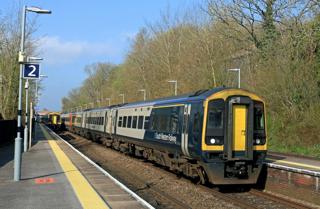
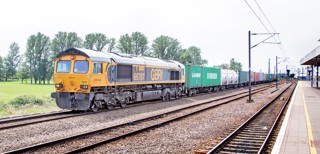
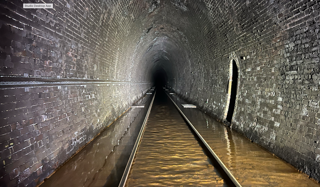
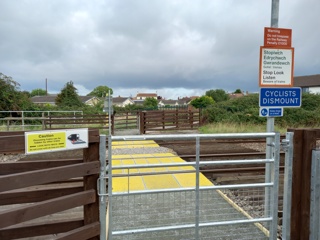












Login to comment
Comments
No comments have been made yet.